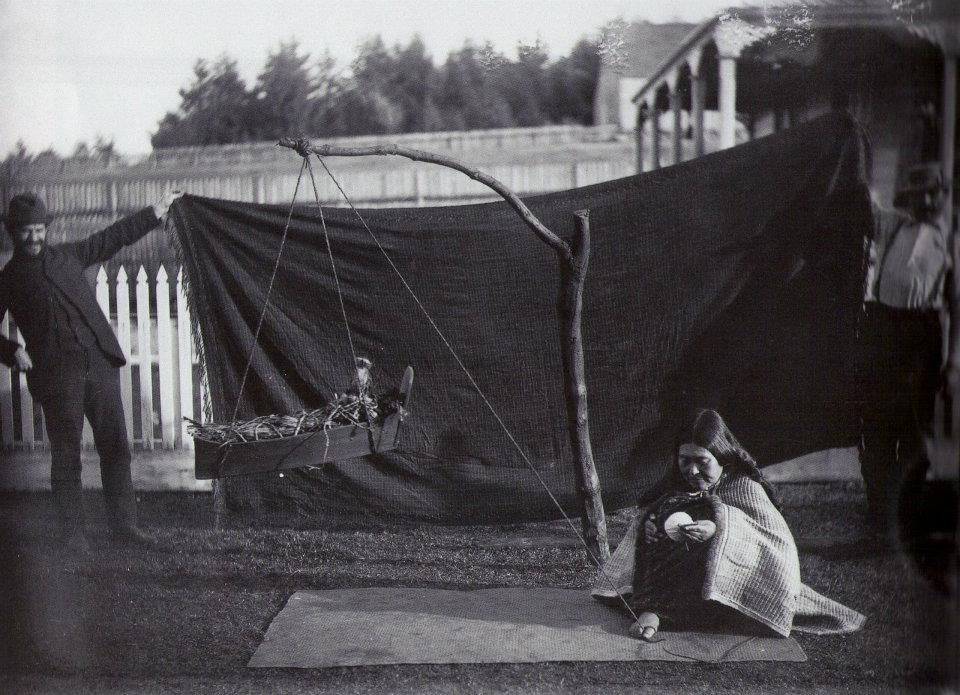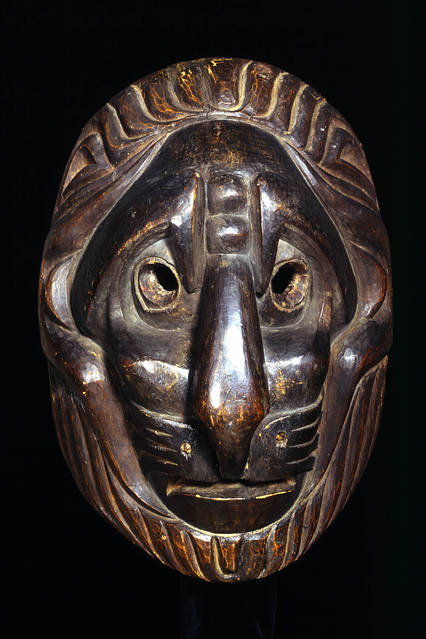THE NEW CRITERION, September 2019
On the beginning and end of the Most Serene Republic.
The Venice Biennale, that strange pageant of contemporary fashions, offers the opportunity, if not the necessity, to explore the real art of La Serenissima. At the furthest extreme from the latest forms on display in the Biennale’s Giardini are the ancient mosaics of the Church of Santa Maria Assunta, on the distant lagoon island of Torcello. I brought my family to Torcello’s desolate piazza on what proved to be the hottest morning of a hot Italian summer. Torcello is an hour by vaporetto water bus from the Fondamente Nove, on the northern edge of Venice’s sestiere of Cannaregio. We cut the time in half by water taxi and sped past the islands of Murano, Burano, and Mazzorbo before idling up to Torcello’s Ponte del Diavolo, where the narrow canal becomes too shallow for navigation.
Since we arrived early, we had to wait for the church lady to unlock the doors of the basilica. We fed the languid fish schooling by the abandoned quay of a nearby channel. Then we huddled in what shade we could find on this barren deposit of alluvial silt. Torcello’s tiny Locanda Cipriani, the fabled retreat where Hemingway wrote Across the River and into the Trees, was closed for the day, so the negronis would have to wait. At one point, we begged someone inside the island’s archaeological museum for some shelter from the sun. Mi dispiace, he said, closing the shutters on us. Our water supply started running low, as did my party’s patience. In the Italian custom, the attendant for Torcello’s lavish municipal bathroom had overslept and missed his ferry, and no one else had the key.
The privations no doubt made the sight of Santa Maria Assunta, once we were let inside, all the more thrilling. On its western wall, the golden vision of its “Last Judgment,” which received a full cleaning and restoration in February, is as profound as any art in Venice. With six vertical registers, the mosaic is filled with an awe-inspiring amount of visual information: scenes of the crucifixion, anastasis (resurrection), deesis (Christ with Mary and John the Baptist), and psychostasis (the weighing of souls) all rest on vignettes of heaven and hell divided in the lowest registers.
The Last Judgment, ca. twelfth century, Gold and glass mosaic.
The decorative splendor of this mosaic barely holds its dynamic forces together. In the upper registers, an expressive Christ pulls the souls of the Old Testament up from limbo to heaven by their wrists. Below, a snaking line of judicial plumbing leads down to increasingly explicit visions of hell. Two demons try to tip the scales of Saint Michael with their pitchforks while pouring out sins from bottles and bags. Meanwhile the damned are subdivided among the lustful, gluttonous, wrathful, envious, avaricious, and slothful, where they endure fiery and icy torments, when not being eaten by worms.
Today Torcello is an overlooked shoal in the northern lagoon, but at one time the island nurtured the first seeds of what became the great Republic of Venice. Torcello flowered as the original center of activity in the Veneto, before its channels silted up and its inhabitants relocated to the nearby islands of Burano, Murano, and the high ground of the Rialto. A millennium ago, at its apex, there were some ten thousand inhabitants on Torcello. Today, only about a dozen remain. Torcello’s “Last Judgment” therefore offers genuine revelation. The end times here have already come.
There was a period when Torcello was the crucible of Venice’s unexpected beginnings. In the final days of the Western Roman Empire, barbarian hordes descended on the old Roman towns still clinging to the shores of the northern Adriatic. As Attila the Hun surrounded the town of Altinum in 452, its residents fled to the sandbars of the nearby lagoon. These Roman holdouts and refugees from the other Veneti towns became lagoon dwellers, incolae lacunae, just three miles south of Altinum on the shifting delta sands of the River Sile.
Today the view from Torcello’s campanile does not look all that different from what those settlers first saw fifteen hundred years ago. In The Stones of Venice, John Ruskin called the sight “one of the most notable scenes in this wide world of ours. As far as the eye can reach, a waste of wild sea moor, of a lurid ashen gray; . . . lifeless, the color of sackcloth, with corrupted sea-water soaking through the roots of its acrid weeds, and gleaming hither and thither through its snaky channels.”
A close-up of “the Envious,” The Last Judgment, ca. twelfth century, Gold and glass mosaic.
The Venetian lagoon has always been an alien landscape, but its separation from the mainland provided essential protection from Italy’s drawn-out period of Germanic incursions and the collapse of the Byzantine Empire. In their exodus, the settlers built houses on pilings of hardwood driven into the mud flats. All of Venice was built this way. It is said that the baroque church of Santa Maria della Salute, the towering domed memorial to the devastating plague of 1630 by the Punta della Dogana, rests on a million wooden piles. The Venetians also organized their new community along Roman republican lines. Rather than be ruled by an emperor or king, they elected their leader—dux in Latin, duke in English, doge in Italian. In this way the Veneti of the lagoon formed their mighty maritime republic that endured for over a thousand years. In the Republic’s final days, before its destruction by Napoleon, the Venetians even counseled the architects of the United States on the secrets of their Republic’s endurance.
The foundation stone of the Torcello basilica was laid in 639, a year after the town’s bishop had a vision that his flock should abandon what remained of Altinum. As Torcello rose in importance, its basilica became a prominent cathedral. The nearby channel, now little more than a shoaled-up estuary that harbors those languid fish, was once Torcello’s bustling Grand Canal. The relics of Saint Heliodorus, the Altinum bishop who accompanied Saint Jerome and was martyred in 390, were carried off from his Roman town and laid to rest beneath the basilica’s altar. His golden reliquary can still be seen there today. Since the Torcello basilica predates the construction of even the first cathedral of San Marco in Venice by some two centuries, one legend maintains that the body of Saint Mark was first interred here, perhaps in the crypt’s Roman sarcophagus, after two Venetian merchants alighted with the Evangelist’s remains from Alexandria, Egypt, which was then under the dominion of the Abbasid Caliphate.
About the time of the height of Torcello’s predominance in 1100, the interior of the basilica received its cycle of golden mosaics, which includes a sorrow-filled image of the Virgin and Child in the main apse above a swirling, tessellated marble floor. Byzantine in form, the selection of a Last Judgment scene for the opposite towering western wall, through which congregants once entered and exited, is said to have been a particularly Venetian touch.
Torcello reveals Venice in its true provisional strangeness, where art gives vision to immanence and relics buoy the faithful to the final days. The great works of Venice have always conveyed these contingent qualities—as a world between worlds. Rather than gaze up to some idealized beyond, the art of Venice looks out to proximate, felt, rough-and-tumble revelation.
A close-up of “the Gluttonous and Avaricious,” The Last Judgment, ca. twelfth century, Gold and glass mosaic.
Art has always played a central role in connecting the Venetian experience to the cosmic story. The particular hardships endured by the disease-prone city can be seen through its adoration of the “plague saints”: San Rocco, in whose scuola and church, in the sestiere of San Polo, Tintoretto painted one of the world’s greatest cycles of Christian image-making; and San Sebastiano, in whose church, on the site of a medieval hospice in the sestiere of Dorsoduro, Veronese painted some of his own masterpieces. For the Scuola Grande di San Marco, which now serves as the entrance to Venice’s hospital, in the sestiere of Castello, Tintoretto painted his breakthrough Miracle of the Slave (1548), along with his famous depictions of how the body of Mark came to Venice (and its miraculous rediscovery after the Evangelist was, for a time, temporarily misplaced).
Art holds a particular power over the city, just as the city conveys a particular power to art. Undoubtedly this is the reason why many contemporary artists come to congest Venice’s art-filled walls: to claim the city’s revelations, even if what they themselves purport to reveal may be facile and false. Of course, the science-fiction didacticism of the group show in this year’s Biennale, full of blinking lights and spinning whirligigs, speaks little to the art of Venice’s resonant past. In our secular age, so enraptured with the present moment, how could it? Yet sometimes connections can still be made: in the United States Pavilion, the sculptures of Martin Puryear, which draw together the classicism of many sculptural traditions, are fraught with memory; an exhibition on “The Nature of Arp” at the Peggy Guggenheim Collection speaks to the aquatic forms of the lagoon; “Pittura/Panorama: Paintings by Helen Frankenthaler, 1952–1992,” at the Palazzo Grimani, returns the great modernist to Venice some fifty years after she dazzled in the United States Pavilion with her aqueous compositions; and at Ca’ Pesaro, “Arshile Gorky, 1904–1948” reveals the tragic vision of the American abstractionist who lost his family in the Armenian genocide.
Through plague and pestilence, rising sea waters and sinking salt marshes, in Venice the end has never seemed all that far off. Today the flood that troubles Venetians most is the tourists pouring out of grandi navi, the massive cruise ships that wreak havoc on the Giudecca Canal and may soon be banned, not the city’s frequent inundations of acqua alta, which locals take in watery stride. Last November, when I was previously in Venice for the Tintoretto exhibitions at the Palazzo Ducale and Accademia museums, the high-water siren sounded at daybreak. The sirene allertamento acqua altanow broadcast from twenty-two points across the historical center and islands of Venice. From my window overlooking the Accademia, I listened as the signal broke the morning spell from the alarm atop San Trovaso. As my water taxi motored up the Grand Canal, the flood waters compounded with the morning rain and washed over the calliaround the Ponte di Rialto.
Thirty-five years ago Venice installed its first flood alarm on the campanile of San Marco. A new alarm developed by the Centro Previsioni e Segnalazioni Maree now uses a wireless network and digital signals of various tones to indicate the height of the rising tide. Venetians also sign up for emergency notices by text message, giving them a few extra minutes to slide in the low metal barriers at the bottom of their doorways to hold back the headwaters. In the months of fall, as the sirocco southern wind, the full moon, and other hydrological effects converge on the Adriatic to push water into the lagoon, many Venetians now simply leave the barriers in place.
The waters of the lagoon have always offered protection and destruction in equal measure. With its canals framing an architecture of exquisite lace, the city’s liquid light gives evanescent form to the miraculous story of survival that began, and ended, on humble Torcello. “Without making this excursion you can hardly pretend to know Venice,” Henry James said of his own visit to that island. “It is impossible to imagine a more penetrating case of unheeded collapse. Torcello was the mother-city of Venice, and she lies there now, a mere mouldering vestige, like a group of weather-bleached parental bones left impiously unburied.”






